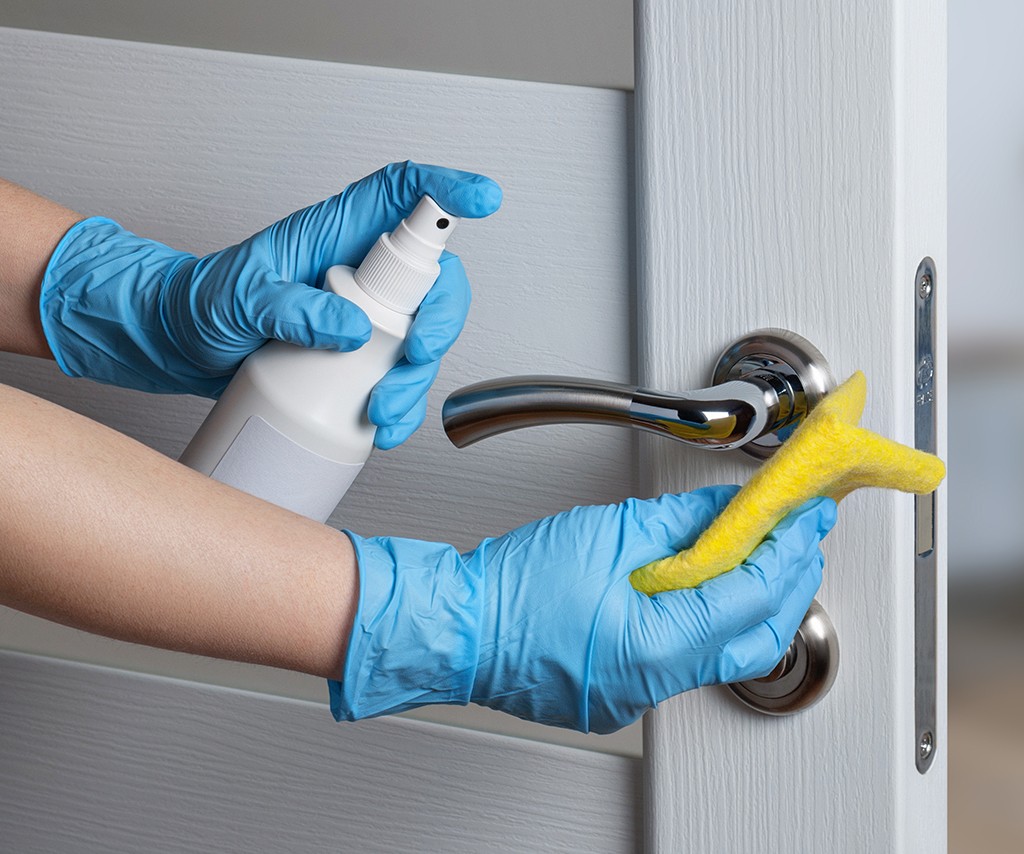Quanto tempo o vírus que causa a COVID-19 sobrevive no ambiente?
Hilab | 18 maio 2020

Declarada como pandemia em março de 2020 pela Organização Mundial da Saúde, a COVID-19 é a doença causada pelo novo coronavírus, o Sars CoV-2. Mesmo com o intenso trabalho de cientistas e profissionais de saúde para combater a doença, muitos boatos são reproduzidos, atrapalhando as ações desses profissionais.
Muitos das fake news que estão circulando na internet atualmente, estão relacionadas à forma de transmissão da infecção e à sobrevivência do vírus no ambiente.
Acompanhe o artigo a seguir e saiba como e por quanto tempo o vírus da COVID-19 sobrevive.
Como a COVID-19 é transmitida de pessoa para pessoa?
A infecção é transmitida, principalmente, através do contato com gotículas infectadas que se encontram em objetos, superfícies e até mesmo o ar.
Essas gotículas e secreções são espalhadas no ambiente quando as pessoas tossem ou espirram e são chamadas de aerossóis.
Como o vírus é altamente contagioso, a transmissão da doença ocorre facilmente.
O novo coronavírus permanece no ar por quanto tempo?
Um estudo publicado pelo New English Journal of Medicine (NEJM) revelou que o Sars CoV-2 pode permanecer no ar por até três horas.
Nesse estudo, um nebulizador simulou espirros e tosse, borrifando o SARS-CoV-2 no ambiente, revelando que o vírus fica suspenso no ar.
Após a experiência, a pesquisa considera a possibilidade de uma pessoa ser infectada pelo ar, após respirar o vírus.
Quanto tempo o vírus permanece nas superfícies?
O vírus causador da COVID-19 pode sobreviver até 72 horas em algumas superfícies. O estudo realizado pelo NEJM avaliou a atividade do vírus em materiais distintos, sendo eles plástico, aço inoxidável, papelão e cobre.
Nas superfícies de plástico e aço inoxidável, o tempo de sobrevivência detectado foi de três dias (72 horas), enquanto foi constatado que o vírus sobrevive 24 horas sobre papelão e 4 horas sobre cobre.
Em artigo publicado no The Journal of Hospital Infection, o resultado de experiências para saber o tempo de vida do Sars Cov-2 em outros materiais foi analisado, sendo eles:
| Material | Tempo de vida | Exemplos |
| Alumínio | 2 – 8 horas | latas de refrigerante, papel alumínio |
| Cerâmica | 5 dias | pratos, objetos, vasos |
| Metal | 5 dias | maçanetas, jóias, talheres |
| Madeira | 4 dias | móveis, decks |
| Vidro | 5 dias | copos, espelhos, janelas |
| Papel | 5 dias | documentos, revistas |
Em alimentos, o coronavírus parece não se proliferar.
Mesmo assim, é preciso lavar frutas, legumes e embalagens, utilizando um pincel ou esponja para remover os micro-organismos com mais segurança.
Com relação à tecidos e materiais têxteis, o virologista Flávio da Fonseca explica em entrevista ao G1, que não há estudos sobre a permanência do Sars CoV-2 em tecidos, mas em geral, os vírus podem ter uma sobrevida de 72 a 96 horas nesses materiais.
Há a possibilidade de ser contaminado pela água?
O coronavírus não foi encontrado na água potável. Se entrar no suprimento de água, a estação de tratamento local filtra e desinfeta a água, eliminando esses micro-organismos.
A temperaturas extremas inativam o vírus?
Alguns estudos apontam que o coronavírus sobrevive mesmo em temperaturas acima dos 30º C e 40º C, podendo resistir à incidência da luz solar. Por isso, ainda não há uma temperatura específica que aja diretamente sobre o vírus.
Temperaturas baixas também não matam o vírus, inclusive o congelamento de itens e superfícies contaminadas apresentam pouco ou nenhuma perda na estrutura do vírus.
A contaminação pode acontecer durante o uso de piscina?
Depende. De acordo com a Sociedade Brasileira de Salvamento Aquático, para que a água seja segura para banho, é necessário que esteja corretamente tratada com cloro, com atenção à proporção certa de água clorada na piscina.
Isso porque o cloro mata diversos tipos de micróbios em geral, por isso a chance de contrair o vírus através da água da piscina é muito baixo.
Porém, em meio à pandemia há exposição à superfícies (escadas, corrimãos) e objetos contaminados fora das piscinas, além do contato com outros nadadores, que pode invalidar a segurança da prática.
Como evitar o contato com o vírus?
Visto que é invisível ao olho nu, é impossível saber quais ambientes estão infectados com COVID-19 e a prevenção ao contato é a medida principal para evitar a contaminação.
Além do isolamento social, o uso de máscara e a correta higienização das mãos são as principais ações preventivas que combatem a exposição à COVID-19, recomendadas pelo Ministério da Saúde.
Nas superfícies, a higienização do ambiente precisa ser realizada com soluções de álcool 70% ou hipoclorito 1%, que garante a desinfecção.
Gostou de saber o que acontece com o novo coronavírus nos ambientes ou tem alguma dúvida? Deixe nos comentários sua resposta.

Hilab
Somos especialistas em Point-of-Care Testing. Criamos dispositivos para exames PoCT, realizados com apenas algumas gotas de sangue e resultados entregues em poucos minutos. Nosso propósito é democratizar o acesso à saúde.

Deixe um comentário